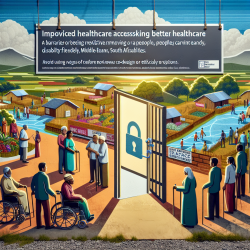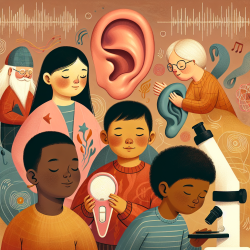As a practitioner dedicated to improving the lives of stroke survivors, staying abreast of the latest research and implementing its findings is crucial. The study titled A Feasibility Study of Expanded Home-Based Telerehabilitation After Stroke offers valuable insights into enhancing home-based telerehabilitation (TR) for stroke patients. This blog explores the study's key findings and provides practical steps for practitioners to incorporate these insights into their practice.
Key Findings from the Study
The study, conducted by Cramer et al., investigated the feasibility of an expanded TR program for stroke patients. Here are the notable outcomes:
- Extended Therapy Duration: The study extended TR from 6 to 12 weeks, providing patients with more prolonged and intensive therapy sessions.
- Incorporation of Both Arm and Leg Exercises: Unlike previous studies focusing solely on upper extremities, this study included exercises for both arm and leg motor deficits.
- Unsupervised Patient Assessments: Patients performed assessments without therapist supervision, which were successfully implemented.
- Use of Real Objects in Therapy: Sensors were attached to real objects, allowing patients to use these objects to drive gameplay and enhance functional relevance.
- Daily Pill Ingestion: Patients were prompted to take a daily experimental pill, demonstrating high compliance and feasibility for future clinical trials.
- Automated Actionable Reports: The system generated automated reports to notify clinicians of critical findings, improving timely interventions.
Implementing Study Outcomes in Practice
Here are practical steps to incorporate the study's findings into your practice:
- Extend Therapy Duration: Consider extending the duration of TR programs to 12 weeks to provide patients with more intensive rehabilitation opportunities.
- Include Comprehensive Motor Exercises: Integrate exercises targeting both upper and lower extremities to address a broader range of motor deficits.
- Enable Unsupervised Assessments: Develop protocols for patients to perform certain assessments independently, reducing the need for constant therapist supervision.
- Utilize Real Objects in Therapy: Incorporate real objects into therapy sessions, using sensors to track and enhance patient engagement and functional relevance.
- Promote Daily Pill Compliance: Implement strategies to encourage daily medication adherence, potentially integrating it with TR sessions.
- Leverage Automated Reporting: Use technology to generate automated reports for critical findings, ensuring timely and efficient clinical interventions.
Encouraging Further Research
The study's findings highlight the potential of expanded TR programs to improve stroke rehabilitation outcomes. However, further research is needed to optimize these approaches and explore their long-term benefits. Practitioners are encouraged to stay updated with ongoing research and contribute to the growing body of knowledge in this field.
To read the original research paper, please follow this link: A Feasibility Study of Expanded Home-Based Telerehabilitation After Stroke.










